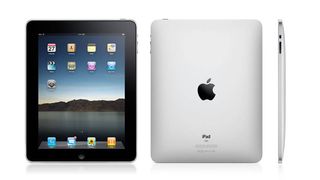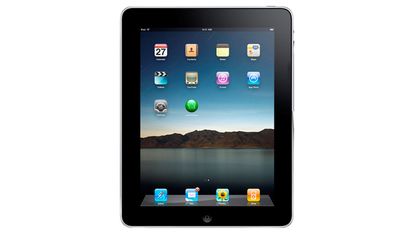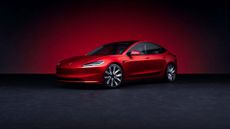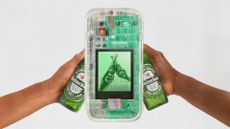Design and innovation easily represents the most diverse collection of new technologies and advancements. From gadgets to automobiles and beyond, it's here we find the real beating heart of tech development. The new and the fresh, the exciting and the surprising. Past winners have not only wowed us, but they've gone on to fundamentally change the way we use technology. Many have become integral parts of how we live ours lives today, seeding into the very DNA of our working and personal lives.
And this year's selection of Design and Innovation Awards (now appearing on the same year's T3 Awards for the very first time quite some time) are looking to raise the bar even higher. So click here and start voting for your favourites in these and every other category. Hey, you might even win yourself an Apple Macbook by the time the awards themselves are handed out on 28 September.
2009: Spotify

Back in 2009, there was plenty of hardware making waves, but it was in software that we were seeing some of the most exciting changes. New media was becoming king, and fast rising to the top of that battle for the throne was a quickly-expanding music service from Sweden called Spotify. Launched properly in 2008, Spotify was attracting major labels and artists by the day, turning its digital music library into one of the most comprehensive audio catalogues available.
When we shortlisted it in 2009, before it summarily bagged the big one, it was quickly changing how we consumed music and podcasts online. The freemium model, making its catalogue available for free with the caveat that you'd have to contend with adverts (or without if you opted for the paid-for Premium version), turned us onto the concept of enjoying new and classic tracks online, without ever having to purchase a version or buy a physical copy. And considering it now has 100 million active users and half a billion registered users, we can safely assume our faith in the service was well placed.
2010: Apple iPad

One year later, Apple was swinging technological haymaker after haymaker. Not only did it bag Computer of the Year with the sultry Apple Macbook Pro and topple many a challenger to win Retailer of the Year with the Apple Store, it also blew everyone away with our Gadget of the Year: the Apple iPad. It seems mad to even imagine a time when we didn't have tablets in our lives, and yet up until 3 April, 2010, we were simply living half-lives devoid of proper touchscreen gaming and the ability to read comics digitally.
“The iPad could herald the dawn of a new era; the flood of me-too products has already begun,” we wrote back in 2010. “It could simply be a fantastically good gadget that'll never find a real niche. Either way, it's the best thing that's happened this year in the tech world, hands down.” How can we put it better than that? The iPad changed everything, ushering in a new era of touchscreen apps and gaming, forcing electronics firms around the world to feverishly start developing tablets of their own and making smartphone manufacturers rethink the importance of screen real estate.
2012: Raspberry Pi

It might have a ridiculous name, but it's impact on the world of amateur computing and coding couldn't be more serious. First launched in 2012, the same year it won the Innovation of the Year at the T3 Awards, the first generation of Pi introduced the world to the potential uses of a credit card-sized, single-board computer. It placed everything a young mind could possibly need to build their very own computer, with a CPU, GPU and the all the USB, Ethernet, HDMI and sound ports you could possibly need.
It was designed to be not only innovative, but affordable, making it perfect for use in schools. Now pupils didn't just have to sit at a PC or Mac to learn new software or hardware skills - now they could build something with a smart heart that was ready to start pumping at any moment. It also opened the door for coding, a facet of programming that could translate into countless industries, inflaming those young minds to great things at an early age.
2015: Microsoft HoloLens

Then there's last year's Design Innovation winner: the Microsoft HoloLens. In a year filled with headsets geared towards virtual reality, Microsoft dared to take those principles one step further. It was part Google Glass, part Oculus Rift, creating a legitimate augmented reality experience with applications in almost every industry.
Even in the home, it's an doorway to innovation - experiencing Minecraft in your living room or watching a virtual cinema screen on your bedroom wall. We've been lucky enough to delve into HoloLens in person, and it was enough to convince us it was a true glimpse of the future. Microsoft may have stumbled with Kinect, but it's set to score a homerun with HoloLens. It was a rightful winner that year, and one we can't wait to see impress even more in the year's to come.
So, who is competing for the awards this year?
We've got a really doozy of a list this year, with the B&W Zeppelin Wireless going up against Hive Active Heating, Olympus Pen-F, Dyson Supersonic, Aston Martin DB11 and Samsung Galaxy S7 Edge in the Best Design category, while the LG G5 and "Friends" squares up against the Samsung Gear 360, Hyundai ix35 Fuel Cell, Sony LSPX-W1S Ultra Short Throw Projector, Samsung Addwash and HTC Vive for the Innovation of the Year award.
Want to help decide who wins? Then make sure you vote now in the T3 Awards 2016.



